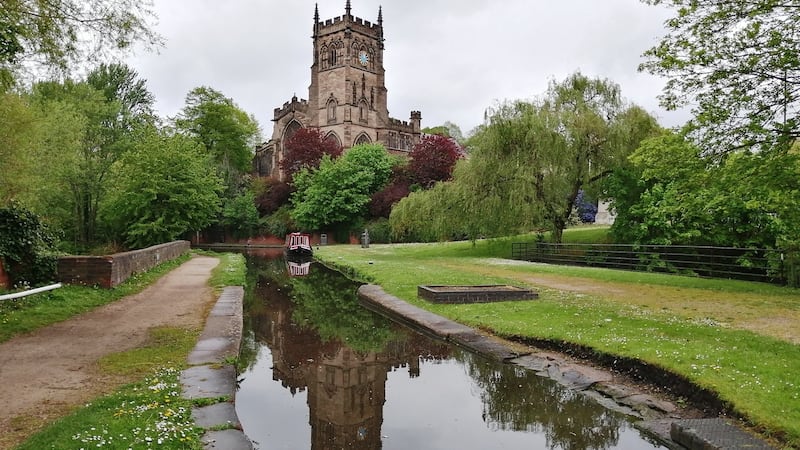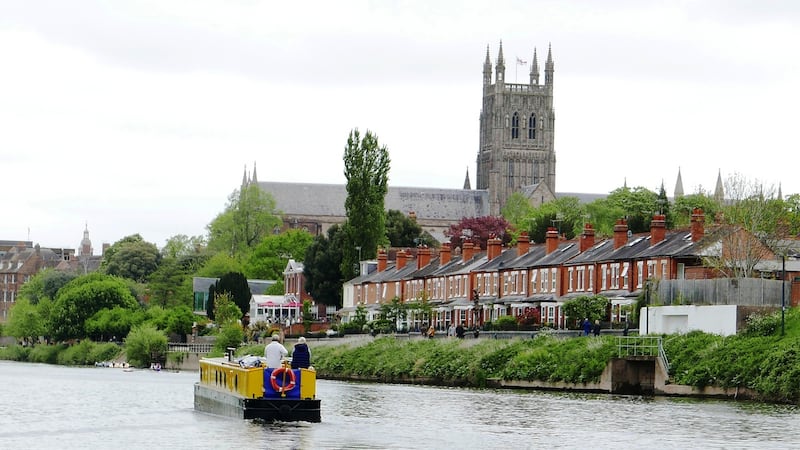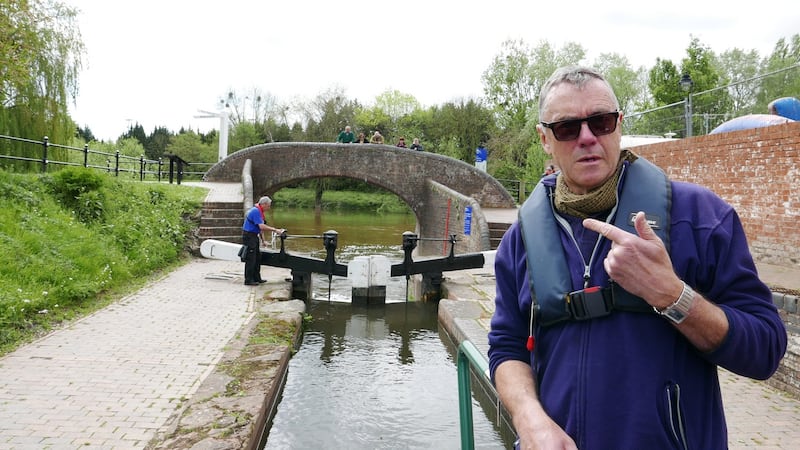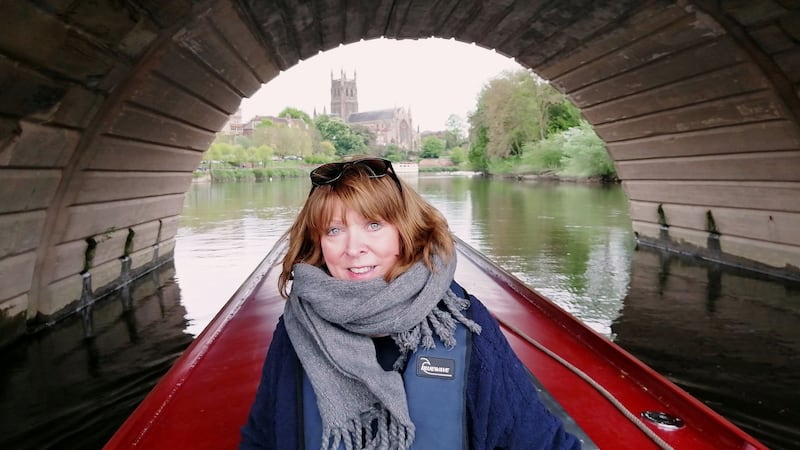At times of deep anxiety, we often pray for a guardian angel to offer assistance, and ours came with the disarming smile and soft Donegal lilt of a river Severn lock-keeper called Kevin.
On our third day chugging along in our hired narrowboat up England’s longest river, having experienced hours of sun-dappled bliss interspersed with moments of unbridled terror, it was his calming demeanour which steered our thoughts away from impending watery doom.
As I lashed the boat’s mooring ropes to his huge lock’s steel cables, he advised us about everything from the best waterside pubs, to our next big hurdle, an hour up the river, which would involve turning the boat right (er . . . sorry. . . starboard) into the canal system at Stourport.
Oh, and we also discussed the contrasting landscapes of his home county and my father’s beloved Mayo.
Such wise and friendly words from savvy veterans like Kevin are precisely what narrowboat first-timers need when they find themselves suddenly thrust into command of a huge steel beast that has to be directed through often sinister-seeming dark water, using very strange terminology.
And so it was when I entered the odd world of weed boxes, grease pumps and winding holes along with my partner and photographer, Sue Mountjoy, who, like me, has always wondered how she would survive – both mentally and physically – a week spent navigating one of these elongated slowboats along Britain’s ancient waterways.

We were not alone; UK boat operators report rises of around 6 per cent in bookings this year. The sinking pound has brought in bargain-hunting tourists from euro zone countries, including Ireland, seeking “tranquillity” holidays afloat.
Before their voyage begins, however, all hirers must go through a couple of hours of instruction. In our case this happened at the ABC Boat Hire base at Alvechurch Marina, which sits at the heart of a varied canal network that can take you anywhere from a balti-extravaganza in the centre of busy Birmingham to the cow-dotted fields of Middle England’s Warwickshire, or Shakespeare’s Stratford-on-Avon.
For Sue and me, there was one definite red line: our route had to pass through as few as possible of those ingenious, yet muscle-stretching, locks constructed to take your boat up or down a canal’s gradients. At our age, such tortuous workouts are best kept to a minimum.
And so we headed out of the marina, our minds bubbling with the technical knowledge required to stay upright at the helm of an €85,000 floating steel behemoth which looked endless at 14.3 metres (think one and a half bus lengths).
Our boat, named Canyon Wren, sleeps up to four and had what is known as a semi-traditional stern, which means we both had enough rear deck space to enjoy a cup of tea together while one of us was faking it as the skipper on the tiller (the steering stick) and the throttle stick (the joint accelerator and brake).
With hardly a scratch or blemish on its brick-red bodywork (that would soon change), the Wren’s interior had all the mod-cons of a decent hotel, with a spacious double bed (you could convert it to singles and shuffle the front seats into another bed if you had company), as well as a well-equipped kitchen, snug shower room and toilet, lots of storage space, two TVs, Bluetooth audio system and enough LED lighting to play a hurling match at night.

Passageway
Luxurious or not, we soon discovered narrow means narrow and a fair amount of body juggling was needed for two crew members (of a certain girth) to pass in the passageway. Early on, we also discovered that knowledge is power and we should have researched our route better by buying a detailed canal book instead of a flimsy map filled with pretty pictures.
As we headed out of the marina, we bounced off the opposite bank of the Worcester and Birmingham canal (as instructed) and turned right (by swinging the tiller the opposite way, hard left) towards the fast-flowing green waters of the mighty Severn.
The coming days, travelling at anything from almost zero “tick over” speed (when passing moored boats) to a not quite breathtaking 6.4km/h, we faced quandaries galore at locks and weirs, meeting oncoming boats, and even when we tried to ensure our mooring knots were good enough to prevent us from slipping away during the night.
Our world became a kaleidoscope of experiences, from the fun of meeting up at the river’s 16th century Camp Inn with an exuberant crowd of 70th birthday boaters from Devon, to being “rescued” by another of those guardian angels who leapt aboard to help me following a quayside collision as I attempted Stourport Basin’s formidable “dog leg” turn.

Later, as we headed up the Staffordshire and Worcester Canal, designed by Georgian engineering wizard James Brindley and opened in 1772, we both marvelled at the restored black oak and iron locks, the crumbling factories and warehouses and at the red sandstone caves that once housed the towpath ponies.
It was easy to sense the historic transition of the last 250 years since Irish and English navvies (coined from the original waterways word “navigator”) dug and lined these formidable channels, that once carried coal, china clay, alcohol, food and precious Midlands pottery instead of today’s multitudes of ogling tourists and boat-dwellers.
There was plenty of canal-side magic too: candlelit meals on board the Wren and at quirky waterside pubs; a brown mallard with her bobbing brood of ducklings calling for oats at our stern one morning; an aquamarine kingfisher flashing past a hawthorn hedge, as a milky sun’s rays sliced through the wood-smoke twisting skyward from a moored boat’s steel chimney.
And, unbelievably in today’s litigious world, we discovered that innocent collisions are an acceptable part of narrowboating life. As I apologised and extracted the Wren from yet another embarrassing accident, this time with a bunch of moored boats on the canal near Kidderminster, a woman popped up from a hatch and shouted: “Don’t worry love, narrowboating’s a contact sport.”

As we headed back south to the marina in the majestic cathedral city of Worcester, it was clear that we, too, had become infected by the narrowboat bug, despite the all-too-regular collisions.
And when we needed to check if the river would be too high next morning for us to travel (the level changes when it rains heavily at its source in the Welsh Cambrian mountains), we telephoned our guardian angel Kevin at the Lincomb Lock.
“Don’t worry, you’ll be fine,” he replied in that misty Donegal lilt. “See you in the morning, bright and early.”
[ abcboathire.comOpens in new window ]
Odd narrowboat terms
Gongoozlers: bystanders who you find on most bridges and towpaths enjoying the passing boats – and, in our case, savouring the chaos and confusion we were causing.
Winding hole: a widened section of canal where you can attempt a U-turn (with lots of revving and crazed tiller-swinging).
Weed box: a specially cut hole in the boat hull where you can stick your hands into the murky water and remove weeds, string, plastic (even a pair of knickers in our case) wound around your propeller.








